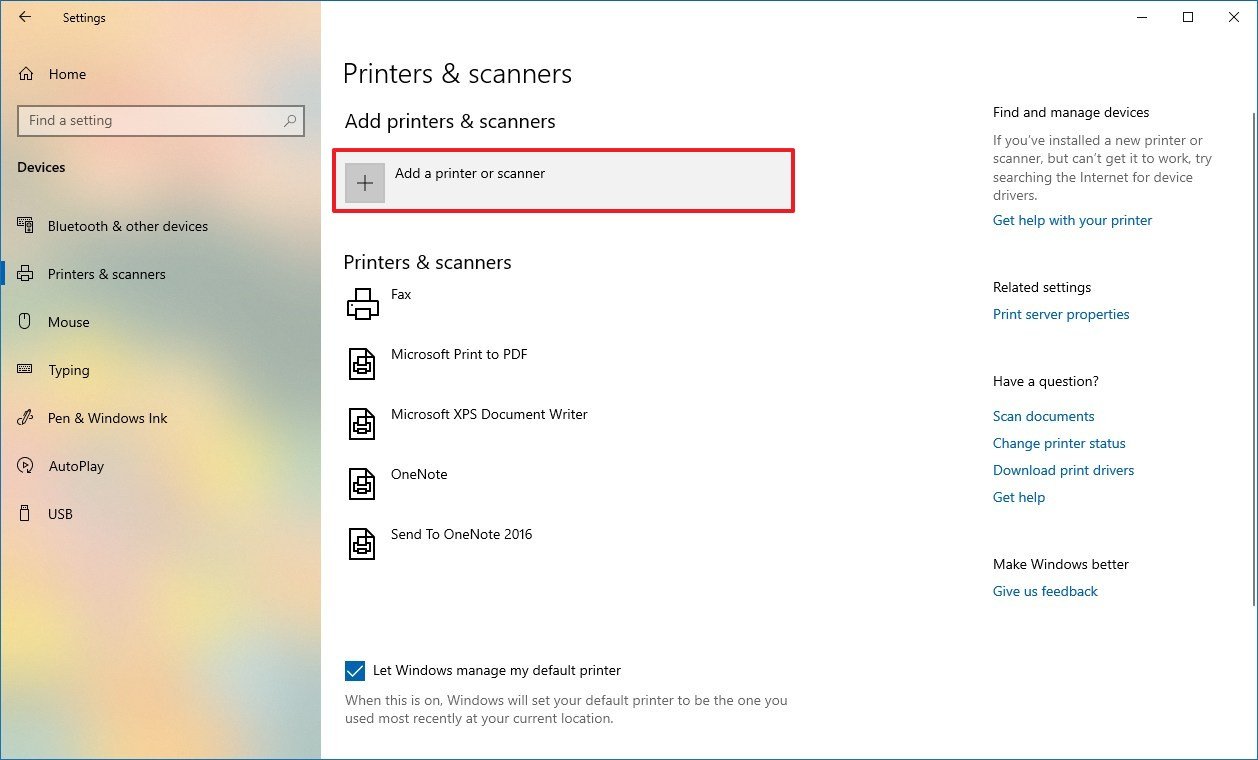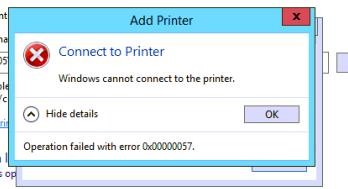HP Printers - Windows 10 Built-in Driver Failed to Install This document is for HP printers and computers with Windows 10. When you connect the printer to your computer wirelessly, with a USB cable, or an Ethernet cable, Windows 10 does not automatically install the built-in printer driver. Windows 10 fails to properly install local/home printer. My printer is an Epson Stylus C88+ connected to a PC running Windows XP SP3, This PC is connected to my home network via Ethernet and printer sharing is setup so all can print and manage the printer. This setup worked fine with Windows 8,1 but now the printer will not install properly. Oct 12, 2015 This setup worked fine with Windows 8,1 but now the printer will not install properly. Even though I can see the printer in Windows 10 the install fails. Aerofly pc download. The printer shows up in Printer and Devices with a green check next to it printing fails immediately.
- Windows 10 Printer Connection Unsuccessful
- Wireless Printer Setup Windows 10
- Printer Failing Windows 10
- Windows 10 Removing Printer Failed
Just got a new wireless or network printer for your home or office and need to install it on Windows 10? Compared to the old days, adding printers in Windows nowadays is usually a pretty easy process, as long as the printer isn’t ancient.
I’ve actually already talked about installing printers before, but my previous article was focused on manually adding a network printer using the IP address. That’s actually a last resort option in case you can’t get the printer installed automatically by Windows 10 first.
Before we get started, let’s talk about how to manage printers in Windows 10, because that has become a bit confusing. In Windows 10, you can add/remove/manage printers from the Control Panel or the Settings app.
Manage Printers in Windows 10
https://golmaker.netlify.app/hack-zip-file-password.html. To get to the Control Panel printer manager, click on Devices and Printers. I still find this interface more familiar since it’s been around since Windows XP.
You’ll see a list of all your printers and other devices that may be on the network. The other way is to click on Start, then Settings and then click on Devices.
There’s really no reason for there to be two ways to do this, but that’s just how it is currently in Windows 10. You can pick either way and you’ll get all the same options, so it doesn’t really matter.
Adding a Printer in Windows 10
Now let’s get into the actual steps for adding a printer to Windows 10. In this article, we are assuming that you have connected your printer to either the wireless network or wired network. As long as your router is giving out IP addresses automatically using DHCP, getting your printer connected to the network should be straight-forward.


For wireless printers, just refer to the instructions on how to configure the printer with the wireless network settings. Most new wireless printers allow you to do this on the on-screen display of the printer, but some older wireless printers require you to connect the printer directly to a computer first, configure the wireless settings and then disconnect it.
Once the printer is connected, go ahead and click on Add a printer in the Devices and Printers dialog on your PC.
Now, if the printers are on and connected, magic should happen and any printers on the network not already added to your computer should appear in the list. If they do not show up, you should click on The printer that I want isn’t listed link at the bottom to troubleshoot. Go down to the Troubleshoot Installing Printers in Windows 10 section to read more about solving common problems.
Windows 10 Printer Connection Unsuccessful
If all is well, click on the printer you want to install and then click Next.
Windows will automatically setup the printer by installing the appropriate printer drivers onto the system. If available, it’ll download the drivers from the printer itself.
After a few seconds, the printer should be successfully added and you’ll be able to print a test page. Note that this procedure will be able to find wireless or wired printers on the network.
Troubleshoot Installing Printers in Windows 10
Now you probably wouldn’t be on this site if everything went so well as shown above, so let’s talk about some of the problems that can occur. Firstly, what if nothing shows up in the list of printers?
The first thing to do is click on that The printer that I want isn’t listed link. This will bring up the Find a Printer dialog.
Cmder already comes with a ‘Bash‘ group containing entries for Bash on mintty (using Cygwin) and another one based on on git-for-windows. To distinguish between the other Bashes and the ‘real’ Ubuntu thing, I simply chose to also opt into this naming scheme. Cmder windows bash free. Mar 30, 2016 Make cmder run the renamed bash.exe as startup shell then. This also allows you to type bash in windows explorer as path and invoke cmder with the current directory set as well. You may also want to change the target of the 'Bash on Ubuntu on Windows' shortcut to cmder. Cmder is a software package created out of pure frustration over the absence of nice console emulators on Windows. It is based on amazing software, and spiced up with the Monokai color scheme and a custom prompt layout, looking sexy from the start.
Wireless Printer Setup Windows 10
You should start out with the first option (My printer is a little older. Help me find it.) as that will perform another scan, but with different methods to detect different kinds of printers.
If you’re in an office environment of some sort with a shared printer, you can go ahead and enter the full path to the printer, which you’ll need to get from your administrator. The Add a printer using a TCP/IP address or hostname option is basically the previous post I wrote about printers, which I linked to at the top of this article.
Printer Failing Windows 10
Salesforce training for beginners pdf. The last option, Add a local printer or network printer with manual settings, is basically if you have a printer that still uses a serial or parallel port. The Add a Bluetooth, wireless or network discoverable printer is the main dialog that comes up when you click on Add a Printer and it will just perform another normal scan.
If none of the options above work for you, it could be a problem with the printing system on your Windows 10 machine. The next option is to run the printer troubleshooter. You can click on Start, type in printer troubleshoot and then click on Find and Fix Printing Problems.
Windows 10 Removing Printer Failed
You can also download another printer troubleshooter from Microsoft and run that to see if it can fix any issues. Lastly, if you have an older printer that doesn’t have a Windows 10 driver, you might just have to upgrade to a new printer. You can always try to install a Windows 8 or Windows 7 driver, but it may not work because of higher security settings in Windows 10. If you have any questions, post a comment. Enjoy!